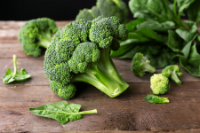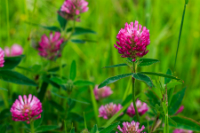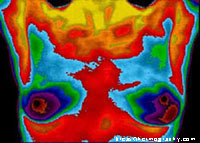Did you know… Those who take time to regularly relax report fewer headaches and
chronic pain than those who don’t make time to relax.
"If a man insisted always on being serious, and never allowed himself a bit of fun and relaxation, he would go mad or become unstable without knowing it." - Herodotus
When
tough times bring you down, your ability to cope in a positive way is known as
resilience. An essential skill for healthy development in childhood, resilience
is critical to well being throughout our lifetime. The overriding question is
this: as adults can we increase our capacity for resilience to lead more
fulfilling lives?
The
answer is YES. Resilience is not a super power; it's an ordinary skill that
anyone can develop at any age. Think of it as an emotional muscle that can be
strengthened. Research shows that resilience is linked to well being by way of
positive emotions and coping strategies (e.g., optimism, cheerfulness,
gratitude, mindfulness). Benefits include:
- a healthier immune system
- lower risk of chronic disease
- faster recovery from illness/
surgery
- improved stress management
- less depression & anxiety
Six Secrets to Pumping Up Your Resilience:
Catch It Early. One
trait of highly resilient individuals is a keen awareness for when things
aren't going right. We've all heard doctors say, "good thing we caught it
early," and that applies to stress: Identify stress early in the process
and you can be proactive in managing how it (and your emotions) affect you and
your health.
Stay in the Light. Optimism is the ability to look at a dire situation and
assess its meaning for your life. If a significant relationship has ended,
there will be grief, confusion, anger and so on. There's also an opportunity to
re-examine your needs and explore what truly makes you happy. Amid dark times,
you can mentally stay in the light by using positive affirmation, hanging-out
with supportive people, and monitoring what you watch and read on a regular
basis.
Look at What's Next. We all tend to blame ourselves for setbacks, worrying about
what could have been done/not done differently. To bolster resilience, remind
yourself that even if you made a mistake, many factors likely contributed to
the problem. Focus on next steps and see how the vibe of that situation changes
from desperation to opportunity.
Recall Your Victories. We've all had shining moments of glory - whether at work, in
sports, or potty-training a child. When you remind yourself of the challenges
you have overcome, you give yourself a shot of resilience.
Manage Daily Hassles. Whether sitting in traffic or waiting in an unexpected long
line when you're in a hurry, use those moments to practice coping skills (deep
breathing, for example). Those mindful-skills will come more naturally to you
when a crisis hits, and you'll have made a big deposit in your resilience bank.
Break Routine. Routines
feel comfortable and are necessary - to a point - but rigidity breeds stress. A
sense of adventure, even a simple but challenging activity, helps build
resilience by enhancing skills that prepare you to handle stress. So, instead
of the 1-mile fun run, enter the 5k; pass on the beach vacation and plan a
guided backpacking trip; ditch date-night at the movies and go to the Escape
Room or take a class.
Reduce Stress with Mindfulness
Reduce Stress with Mindfulness
Can mindfulness really enhance your health and well-being?
Nearly 4.3 million U.S. adults think so. That's how many engage in 'mindful practices'.
Popular media refers to mindfulness as any generic process of paying attention in life (mindfully doing the laundry.) True mindfulness is more precisely defined as "being fully aware of one's own mind, body, and surroundings by paying attention on purpose, in the present moment non-judgmentally and without attachment."
Popular media refers to mindfulness as any generic process of paying attention in life (mindfully doing the laundry.) True mindfulness is more precisely defined as "being fully aware of one's own mind, body, and surroundings by paying attention on purpose, in the present moment non-judgmentally and without attachment."
Mindfulness as a practice to improve health originated with research by Dr. Jon Kabat-Zinn. He demystified the traditional Buddhist form of meditation and founded the Mindfulness-Based Stress Reduction Program (MBSR) at the University of Massachusetts Medical School in 1979. Today, MBSR is used in hospitals, wellness centers, senior centers, inner city schools, colleges, elite sports programs, and rehabilitation clinics around the world. It's proven to be beneficial for various health concerns, often as good as, or better than, medication for:
- lowering blood pressure
- managing chronic pain and illness
- enhancing decision-making
- improving depression and anxiety
- recovering from surgery, trauma, and injury.
The MBSR Program helps people learn to be non-reactive to stress, pain or other triggers, and to decentralize it from the focus of their lives. This results in a cascade of hormonal effects that take the body out of high-alert mode. When the body and mind are relaxed, immune function is enhanced and healing can take place.
An 8-week MBSR program is led by a certified teacher experienced in related practices, such as mindful eating, breath awareness, gentle movement, and walking. Programs can also be designed for specific concerns such as post-traumatic stress, grief, addiction, cancer or back pain. In addition to a mini-retreat, small, weekly classes meet for 90 minutes. The course is designed to help participants establish an at-home practice that becomes habitual. While in-person programs are ideal, there also are excellent online programs. Verify that the instructor is certified in MBSR.
Food for Thought. . .
Spaghetti
squash, also known as vegetable spaghetti, is a type of winter squash that,
when cooked, separates into long pasta-like strands. All winter squash share a
few common characteristics. The outer rinds are hard and difficult to pierce,
enabling them to have long storage periods, from one week and six months. The
flesh is mildly sweet to nutty in flavor and finely grained in texture.
In
general, this squash provides abundant phytonutrients that promote health. It
contains beta-carotene, Vitamin A, and Vitamin C, which provide anti-inflammatory
benefits and support the immune system. Other key nutrients include vitamin B6,
dietary fiber, folate, magnesium, copper, and potassium. The combination of
these nutrients makes this food an excellent part of a heart-healthy diet.
These nutrients are also known for their role in cancer prevention and
management of blood sugar levels.
Spaghetti
squash is at peak season from October to November. Choose a squash that is
firm, heavy for its size and has a dull, not glossy, rind. Soft rinds may indicate
that the squash is watery and lacking in flavor. Some tasty yet simple ways to
prepare spaghetti squash include:
- Top with pasta sauce and
Mediterranean herbs
- Prepare with eggs, onions and
spinach for a savory breakfast
- Combine with tomatoes, avocado,
cumin and cilantro for a Latin flavor
- Toss with low sodium Tamari,
water chestnuts, carrots and bok choy for an oriental flavor
Spaghetti
squash is a great choice for incorporating a tasty, meatless meal into your
weekly menu. Although it has a mild nutty flavor on its own, when you combine
spaghetti squash with sauteed onions, olives, feta, and juicy tomatoes, it
absorbs those flavors, resulting in a Mediterranean dish everyone will enjoy.
This recipe makes a hearty, lunch or dinner. If going meatless isn't your
preference, pair this dish with wild caught fish fish or organic range free poultry.
Serves
4
Ingredients
- 1 3-4-pound spaghetti squash,
halved lengthwise and seeded
- 2 tablespoons sunflower oil
- 1 medium onion, chopped
- 1 clove garlic, minced
- 2 1/2 cups halved grape
tomatoes
- 3/4 cup crumbled organic feta
cheese
- 1/2 cup sliced organic black
olives
- 3 tablespoons chopped fresh
basil
- Salt and pepper
Instructions
1.
Preheat oven to 350
degrees. Lightly grease a baking sheet.
2.
Place spaghetti squash
on the baking sheet, cut sides down. Bake until you can poke a sharp knife into
the squash with little resistance, about 35-45 minutes. Remove squash from
oven; set aside to cool.
3.
Heat oil in a skillet
over medium heat. Sauté onion in oil until tender. Add garlic and sauté for 30
seconds. Stir in the tomatoes and cook briefly, about 1 minute. You only want
to warm the tomatoes.
4.
Use a large fork to
shred the "spaghetti" from the squash and place the strands in a
large bowl. Toss with the sautéed vegetables, feta cheese, olives, and basil.
Add salt and pepper to taste. Serve warm.
The information offered
by this newsletter is presented for educational purposes. Nothing contained
within should be construed as nor is intended to be used for medical diagnosis
or treatment. This information should not be used in place of the advice of
your physician or other qualified health care provider. Always consult with
your physician or other qualified health care provider before embarking on a
new treatment, diet or fitness program. You should never disregard medical
advice or delay in seeking it because of any information contained within this
newsletter.








 Both men and women describe infertility as heartbreaking, more stressful than losing a job or getting divorced. Across the United States, approximately 7.5 million women age 21 to 44 have an impaired ability to get pregnant or carry a pregnancy to term; about 5 million men have a fertility problem.
Both men and women describe infertility as heartbreaking, more stressful than losing a job or getting divorced. Across the United States, approximately 7.5 million women age 21 to 44 have an impaired ability to get pregnant or carry a pregnancy to term; about 5 million men have a fertility problem.

 Stargrass, Blazing Star, True Unicorn… quite magical names for this wildflower with its tall, sturdy round stem from which a cluster of tiny, white urn-shaped flowers blossom. True Unicorn has been used for centuries in traditional medicine to support women's reproductive health, including menstrual disorders and infertility. In native cultures, the herb was given to women with a history of miscarriage.
Stargrass, Blazing Star, True Unicorn… quite magical names for this wildflower with its tall, sturdy round stem from which a cluster of tiny, white urn-shaped flowers blossom. True Unicorn has been used for centuries in traditional medicine to support women's reproductive health, including menstrual disorders and infertility. In native cultures, the herb was given to women with a history of miscarriage.






